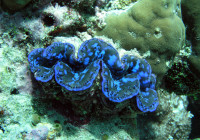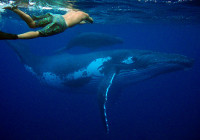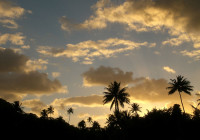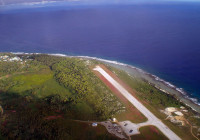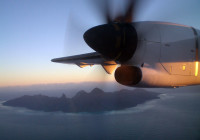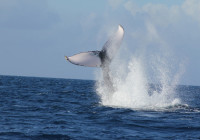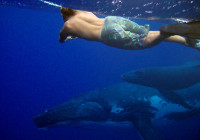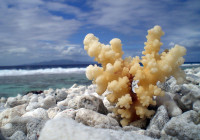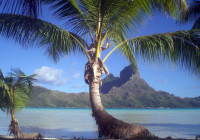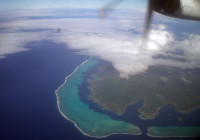Polinesia
French Polinesia is a constellation of more that one hundred islands, spread like pearls in the Pacific Ocean: the ultimate tropical Paradise.
Its rainforests, white sandy beaches and blue waters have always inspired travellers, explorers, artists and poets.
The islands form five main archipelagos, each with its own character: the Society Islands (Tahiti, Moorea, Huahine, Raiatea, Taha, Bora Bora and Maupiti) are volcanic. The Tuamotus make the biggest coral atolls archipelago of the Planet: these islands are flat and have one or more pass, channels that link the open Ocean to the inside lagoons. The Marquesas, emerged from the sea after powerful volcanic eruptions; the Australs are the tips of the same underwater mountain chain of Cook Islands; the Gambier, famous for pearl farms.
Polinesia is a legendary destination for divers.
Big animals lovers won’t be disappointed: in Rangiroa and Fakarava, sharks are a constant presence, while in Rurutu, from July to October, you can swim with humpback whales.
Climate: the dry season is May/October; the wet season is from November /April and the wettest months are December and January.
Best time of year: according to my experience, I suggest August, during the dry season, when the temperature is warm and in Rururu you can swim with humpback whales.
Where to stay: In Huahine, the Te Tiare Beach Resort (www.tetiarebeachresort.com) a very nice place, has cottages immersed in a tropical garden, a nice beach and gives easy acces for snorkeling and kayaking. Tahiti is too crowded and busy for travellers seeking the polinesian dream; if you have to stop there for a night waiting for a flight to other islands, you can stay at Sofitel Hotel ( www.sofitel.com) close to the airport. In Bora Bora, I suggest the Eden Beach Hotel (www.boraborahotel.com), situated on a “motu” (a little island inside the lagoon). This is the ideal solution for people looking for peace and relaxation, has very simple bungalows right on the beach and a spectacular view on the lagoon and the main mountain of Bora Bora.
In Rangiroa the best option is the Kia Ora Hotel, with all amenities; a second choice will be the Novotel (www.novotel.com) nothing special, but conveniently located close to Tiputa and Avataru pass.
In Rurutu, the only solution is the Rurutu Lodge, but you must know that you’ll share its small, cold and humid bungalows with every kind of insects. I know it sounds very bad, but when you swim with the whales you forget everything else.
Diving centers: In Huahine, the Mahana Dive Center (www.mahanadive.com).
In Bora Bora, the Blue Nui Dive Center (www.bluenui.com). In Rangiroa, The Six Passengers (www.the6passengers.com) or the Raie Manta Club ( www.raiemantaclub.com)
Best dive sites: in Huahine, Avapehii Pass (where you can get familiar with a dive in a pass without a lot of current) and Fa’amiti. In Bora Bora, Tapu (home to the big and inquisitive lemon sharks), Muri Muri (known for its population of grey reef sharks) and Toopua. In Rangiroa, Tiputa Pass, where the diving is very demanding, because of the strong currents and emotions: sharks, dolphins, mantas and other pelagics are frequently seen here.
Shark divers can’t miss the dive in Avatoru Pass, a shark feeding dive with the majestic silvertip sharks and the island of Fakarava.
Must see: In Bora Bora, Tapu; in Rangiroa, Tiputa and Avatoru pass: get ready to meet the big creatures of the Ocean, like mantas, dolphin, sailfish and different kind of sharks, including the tiger and the great hammerhead.
Fakarava is another excellent place to dive with sharks.
In Rurutu, between July and October, you can swim with humpbacks.
Diver’s tip: the diving in Rangiroa is very challenging and sometimes the current is super strong. Be careful, respect the limits and always follow the plan. Stay close to your buddy and be visible on the surface. Always carry a flag to show your position.
Web sites:www.tahititourisme.com






